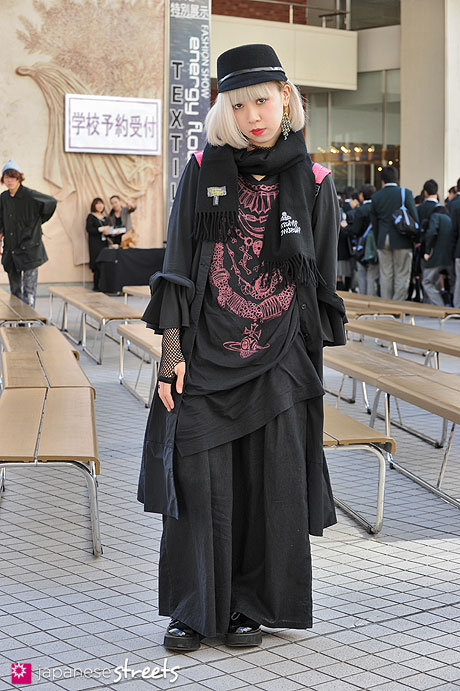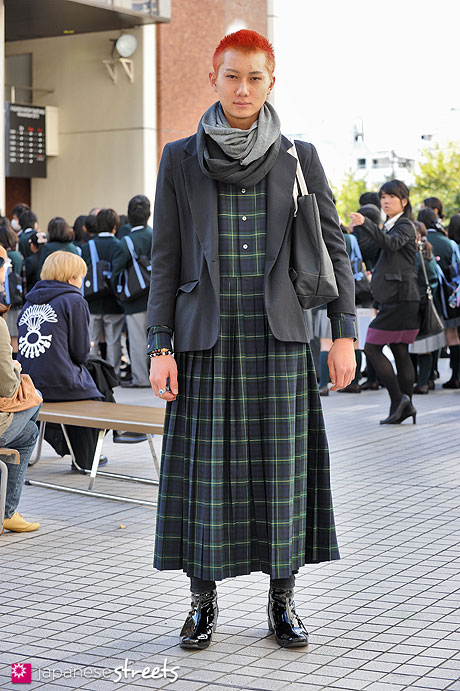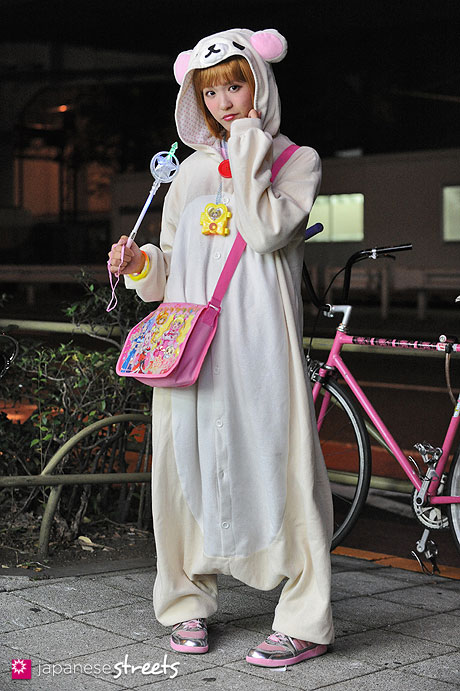Sharon Lin
Blog #5
AKI
EMO
In the past fashion gatekeepers have always been
professionals in the fashion industry. Fashion editors and professionals that
were trained and educated in top fashion institutions have dictated what is
fashionable and ultimately, what people will wear. In Japan, however, this
trend has reversed itself. Japan’s gatekeepers often are not even old enough to
have a formal fashion education. Japan’s most popular fashion stems high
school-aged sales girls in boutiques and shops on the streets of Shibuya and
Harajuku. This phenomenon is evident in Japan Streets, “the longest running
English fashion blog about Japanese fashion.” The blog spotlights different
outfits found on the streets of Japan. A large majority of these ‘featured’
outfits are outfits of students hanging around Shibuya.
This new
type of fashion trendsetting is fascinating, considering how fashion tends to
be disseminated in the United States. In the US, designers become “famous” and
popular when their work is seen on celebrities and people of top class. An
example of such incidence is the work of Jason Wu. After his dress was seen on
the elegant Michelle Obama at the Inaugural Ball, his fame skyrocketed. In
Japan, however, the fashion industry seems almost to have evolved into a
democratic system where the majority “wins” in terms of fashion trends. Consumers
have become an indispensible part of the fashion industry in Japan where “those
who come to shop also play a crucial role in the production of fashion trends…The
teens’ opinions and voices are reflected directly in their merchandise
selection” (Kawamura 193).
Personally,
after seeing the results of Japan’s new fashion gatekeepers, I prefer the way
that fashion is disseminated in the United States. Whenever I look at Japanese fashion,
I find it difficult not to see their clothing choices as avant-garde. The
gothic Lolita style, the Gonguro style and the Mamba styles all make me cringe.
I do not find any of the aforementioned styles, which have been wildly popular
in Japanese street and popular culture, beautiful in any sense. The gothic
Lolita style scares me and confuses me, the Gonguro style gaudy and the Mamba
styles all look like clown make up to me. Beyond pure aesthetics, however, the
Japanese fashion industry’s ability to truly use fashion as a tool of
expressing identity fascinates me. In the United States, we say that our
clothing choices reflect who we are and how we identify, but rarely do we
actually truly identify with and gather with people with styles similar to
ours. If anything, much of US fashion is the same at its core and merely has different
variations. In Japan, however, each style is unique in its clothing choices but
also in the interests the people of that group possess or how they identify. In
Japan, the look reflects a lifestyle.
Inside Source: Kawamura,
Y. "Japanese Teens as Producers of Street Fashion." Current
Sociology 54.5 (2006): 784-801. Print.
Outside
Source: Web log post. Japanese Streets. N.p.,
n.d. Web. .
Be Green Challenge
Update:
The Be
Green Challenge has finally come to an end. When I woke up this morning and
realized it was December 1st I screamed with delight that I can
finally buy things again!! But, it’s been a full day and I still have not made
any purchases. The challenge has become a habit. A good habit. I will probably
purchase something soon, but I have definitely learned to be more conservative
in my consumption of unnecessary retail items. Aside for the minor hiccup on
Black Friday, I have not purchased anything else this month.



No comments:
Post a Comment